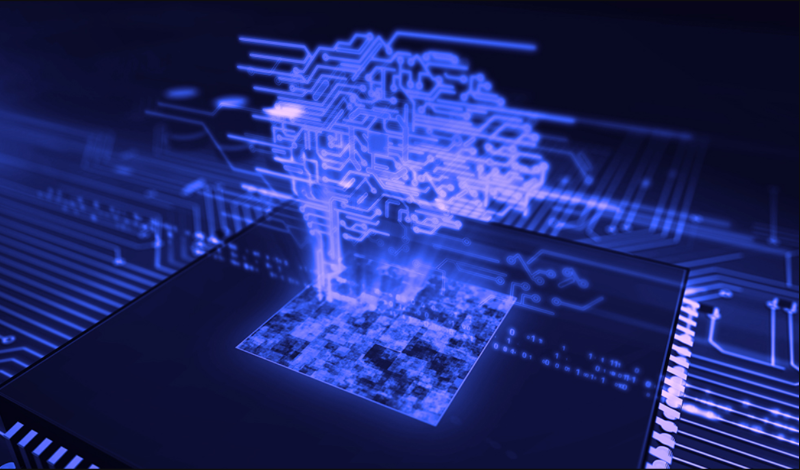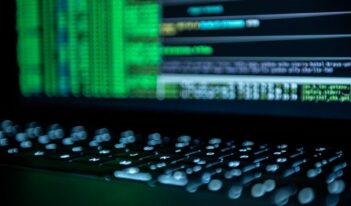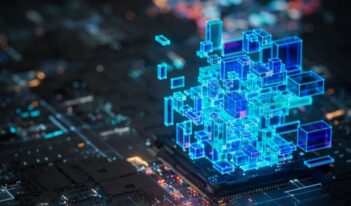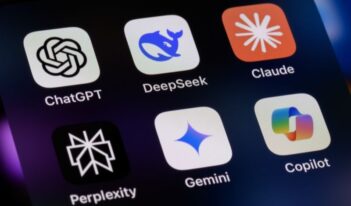
Scholars discuss emerging problems at the intersection of AI and copyright.
The legal framework governing copyright faces a fundamental test due to the rise of generative artificial intelligence (AI) capable of scoring music, writing novels, and creating visual art. As AI-generated content proliferates, policymakers, courts, and industries must grapple with the question of who, if anyone, owns the output of artificial intelligence.
Copyright law was historically designed to encourage human ingenuity by granting exclusive rights to creators. By protecting an individual’s creative labor, copyright would encourage artistic and literary production.
Modern AI models, such as OpenAI’s GPT series or Midjourney’s image generation software, operate by training on vast datasets, absorbing patterns, and generating new compositions based on user prompts—crucially, they do so without independent thought or consciousness. Their outputs are algorithmic, and not “original.”
Copyright law, as developed in the United States and many other jurisdictions, is traditionally predicated on the idea of human authorship. U.S. Copyright law, as outlined by U.S.C. Title 17, extends protections to “original works of authorship fixed in any tangible medium of expression.” Courts have consistently interpreted this phrase to mean that copyright law requires a human creator.
In 2023, the U.S. District Court for the District of Columbia reaffirmed this principle when it denied copyright registration for an image generated entirely by AI. The court held, in effect, that there was no owner of the AI generated image, as it was not produced through human ingenuity, and thus assigned the image to the public domain. Without clear legal recognition, however, AI-generated works may be freely copied and used without attribution, which may undermine economic incentives for “creators.”
The U.S. Copyright Office has taken a cautious stance, refusing to grant full copyright protection to AI-generated works while leaving room for recognition of human-AI collaborations , so long as the AI-generated material was curated or arranged to a sufficiently creative degree.
Globally, legal responses to AI-generated content vary. The United States does not allow for the copyright protection of content made entirely by generative AI, whereas jurisdictions such as China, France, and the United Kingdom do, so long as a sufficient degree of “intellectual achievement,” “intellectual effort,” or “personal touch,” can be demonstrated. The European Union’s AI Act aims to regulate the transparency and accountability of AI systems by requiring disclosure of generative AI systems.
As AI continues to evolve, policymakers need to strike a balance between artistic and technological innovation, freedom of expression, global competition, and protecting potential rightsholders.
In this week’s Saturday Seminar, scholars discuss potential legal solutions to the challenges that generative AI poses to copyright.
- In a recent article in the Florida Law Review Forum, Edward Lee, a professor at the Santa Clara University School of Law, calls for an urgent and comprehensive response to the challenge artificial intelligence poses to U.S. copyright law. Lee argues that the U.S. Copyright Office violated the Administrative Procedure Act by interpreting the “traditional elements of authorship” standard to categorically foreclose copyrighting AI-generated works without conducting notice-and-comment rulemaking. Lee urges instead a shift toward the constitutional requirement of originality the standard to allow copyright protection for many prompt-engineered AI works Lee warns that clinging to outdated notions of authorship would disadvantage U.S. creators globally.
- In a student note published in the Pace Law Review, Giovanni LoMonaco, a JD candidate at the Elisabeth Haub School of Law, argues that courts and the U.S. Copyright Office risk stifling innovation by refusing to copyright protect AI-generated works. LoMonaco rejects the current legal consensus—which holds AI outputs impossible to copyright due to lack of human authorship—and argues that prompting an AI system is a creative act akin to pressing a camera shutter. LoMonaco contends that denying protection to AI works undermines the pro-innovation purpose of copyright law and invites legal ambiguity. LoMonaco instead urges a modest amendment to the Copyright Act to treat AI-generated works as “works made for hire,” vesting legal rights in human users.
- In an article in the Journal of the Copyright Society, Katherine Lee and A. Feder Cooper, co-founders of The GenLaw Center, and James Grimmelmann, professor of law at Cornell Law School, argue that when assessing copyright, generative AI is best understood through “supply-chain framing,” the eight-stage process by which AI is trained to gather and analyze data. Considering that different AI systems employ different methods and algorithms, Lee, Cooper, and Grimmelmann recommend a case-by-case analysis when determining how copyright law should apply. Universal alternatives, such as a “no-liability regime,” would be unstable and effectively legalize all AI systems, including those intended to copy or launder other works, Lee, Cooper, and Grimmelmann contend.
- In an article in the Houston Law Review, Matthew Sag of Emory University argues that AI, despite often being trained on a large body of copyrighted work, is not predicated on copyright infringement. Sag proposes a set of best practices for AI training methods, such as the removal of duplicate data to reduce the likelihood of copyright infringement. Sag recommends the use of human feedback, called “reinforcement learning,” and manually coded content filters to prevent infringement. For text-to-image generation, Sag argues that AI should be trained to store general markers of artistic style only, rather than the names of living artists, to help generalize the output of generative models.
- In a recent article in the Columbia Science and Technology Law Review, Mark A. Lemley, a professor at Stanford Law School, examines how generative AI challenges copyright law. Lemley explains that while traditional copyright law protects expression, not ideas, AI complicates this by generating expression from human prompts. He highlights the difficulty of proving copyright infringement when identical AI outputs can arise from different prompts. Lemley argues that courts should focus on whether someone saw and copied a prompt rather than output similarity. Lemley concludes that policymakers must either rethink copyright law or accept its diminishing relevance as AI creativity grows.
- In an article in the European Journal of Risk Regulation, Nicola Lucchi, of Spain’s University of Pompeu Fabra, uses ChatGPT as a case study to examine copyright challenges in generative AI. Lucchi explains that generative AI systems require substantial training data, which often include copyrighted material. In recent years, Lucchi points out, OpenAI has faced lawsuits for allegedly training their models on copyrighted materials without permission. Although U.S. courts have previously allowed some forms of data mining under fair use, Lucchi questions whether these precedents would apply to generative AI. Lucchi proposes several solutions to protect training data while promoting innovation, including establishing clear data-sharing agreements, implementing remuneration programs for content creators, and creating open-source datasets.
The Saturday Seminar is a weekly feature that aims to put into written form the kind of content that would be conveyed in a live seminar involving regulatory experts. Each week, The Regulatory Review publishes a brief overview of a selected regulatory topic and then distills recent research and scholarly writing on that topic.



